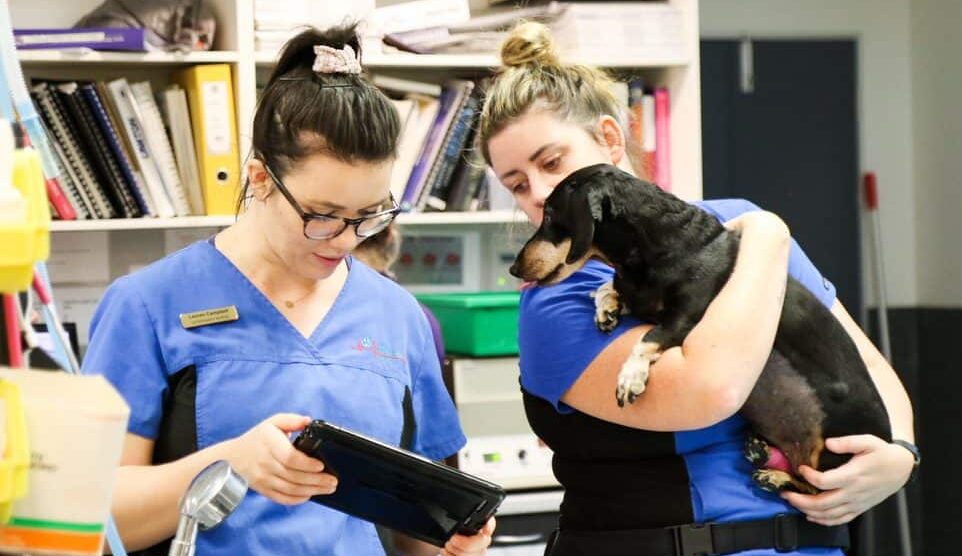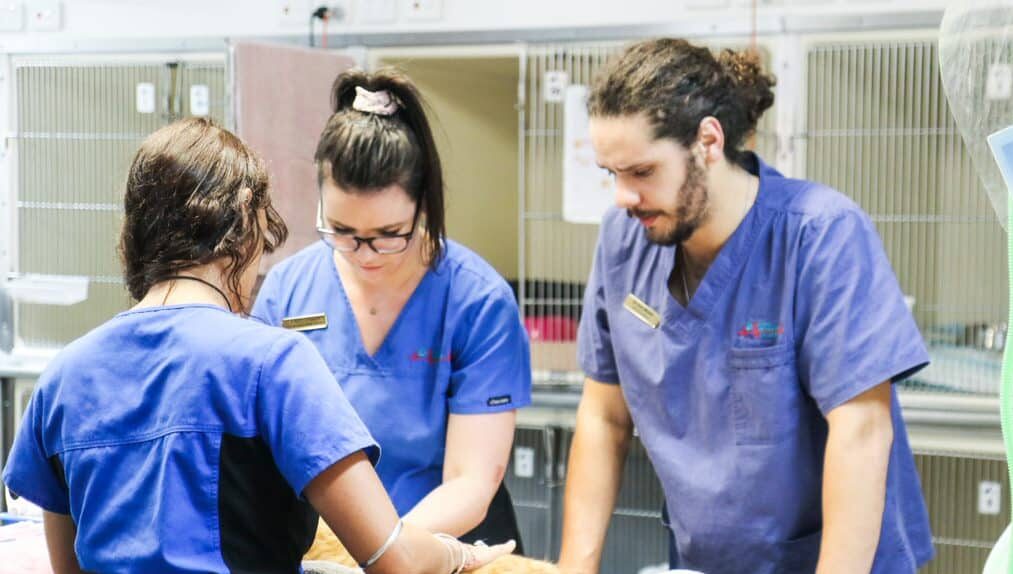Advice and constructive feedback plays a central role in every coaching and mentoring relationship within the veterinary profession. We are always striving to improve our clinical skills, technical proficiency, and our professional ability to effectively communicate with clients. Feedback is a vital component of being able to recognise your areas for improvement and focus on how to grow and better yourself as a veterinary professional.
So what comes to mind when you hear the words “constructive feedback”? Do they have negative connotations? Is it an opportunity for growth? Or is it something that makes you feel nervous or apprehensive?
Think back to a recent time when you were given feedback – it doesn’t necessarily have to be in a clinical setting. Take time to evaluate yourself: how well did you receive it from a scale of 1 to 10? With 1 being not very well at all and it impacted you for significant time, and 10 being you were open and grateful for the feedback as you can see the future value in receiving it.

How to Receive Constructive Feedback
Whether the feedback was delivered appropriately or not, and regardless of the impact it may have had on your feelings, constructive feedback is powerful in so many ways. Feedback contains many valuable pieces of information – feedback is a gift! Being able to see the value contained within often comes down to your mindset.
Possessing the right mindset is one that is objective and focused on future self-improvement. But try to avoid a mindset that is subjective, defensive and focused on the past. There are three key factors at the core of a healthy, open mindset:
- Honesty: Reflecting on the feedback and honestly assessing the role you played, your actions and performance.
- Open-mindedness: The feedback needs to be considered with an open mind. Step back and objectively view how it is valuable to you, and look to see how it can help you improve in the future.
- Willingness: Be willing to accept constructive feedback, take responsibility and ownership. Use it to help you move forward and take action.
Without being honest, open-minded and willing, the value of constructive feedback will immediately be lost. So now that you’ve received feedback and approached it with a proper mindset, how can you get the most out of it and use it to help you improve? This can be achieved with the 8 steps below.
8 Steps to Getting the Most Out of Constructive Feedback
Step One – Understand the Power of Constructive Feedback
As we’ve already discussed, constructive feedback is powerful in many ways. But there are two key reasons that give feedback and incredible amount of power for your own self-improvement:
- It has the ability to highlight your blind spots – “the things you don’t know about yourself” – and allows for increased self-awareness
- It can significantly fast-track your progress
Question: What piece of feedback have you been provided in the past that raised something that you were not aware of and in doing so helped you improve?
Step Two – Know Your Goals or Objectives
Knowing what you want to achieve in the future and having it written down helps you see how the feedback will help you get there, making the goal easier to receive. What is even better is if it is shared with your boss, manager, or coach/mentor. Find a mentor you can trust and sharing your aspirations with them enables them to give you feedback that is directly relevant to your goals and objectives.
Question: What is it that you want to improve upon or where do you want to take your career in the future?

Step Three – Breathe It In!
Most of us are not that good at receiving constructive feedback despite the fact we know it will help us. “Breathe it in” is a process of physically and mentally accepting, creating the space for, and processing feedback.
- First, breathe in a breath to be prepared to listen to the feedback.
- Second, breathe in a breath as you are listening to it. Breathing it in helps keep you calm, and it also creates a space in your mind for the feedback to settle. Quite literally breathe in the feedback as it is being given.
- Third, breathe in a breath as you sit with it and process it. This allows time for you to disconnect personally from the feedback and view it objectively.
- Fourth, breathe in a breath before you respond. Take time to process your response and act without haste.
Step Four – Be Grateful
Giving feedback can often be quite a difficult and uncomfortable task. Consider the person who is delivering their constructive feedback to you – they’re stepping out of their comfort zone and the situation may be hard for them too.
It’s important to be able to understand the reason why they are putting up with discomfort themselves. This may be because they care about you and feel that it is important to share their feedback with you as they want to help you.
Question: What is the impact if you accept feedback more graciously?
Step Five – What Are the Facts and the Patterns?
Consider constructive feedback with an honest self-assessment – keep an open-mind at all times. And be willing to see if there are messages or themes that consistently reoccur. However, if the feedback seems to be repetitive, this could be a symptom of a core issue that you are not addressing.
Question: What is a common theme or issue that has been raised in the feedback you have been given?

Step Six – Your Plan!
The ball is now in your court to make the change! While receiving constructive feedback is certainly valuable, it’s only as useful as the actions that come from it as a result. To make the most of feedback, you need to develop a plan. How are you going to change? What actions will you take towards the value that was just given to you?
Question: Consider constructive feedback you have been given recently or in the past. Have you improved? Have you improved as much as you would like?
Step Seven – Share Your Plan
For maximum impact, it’s worthwhile to share your plan with others. Share it with the person who gave you feedback in the first place. Share it with your supervisor and colleagues. Being vocal about your plan will ensure you stay accountable.
Being able to openly share constructive feedback also demonstrates you have accepted and considered the feedback, that you are being proactive, and taking action to improve.
Question: Who do you need to share your plan with?
Step Eight – Ask For Constructive Feedback Before It’s Offered
Pre-emptively asking for feedback is the best way to get the feedback you are looking for. The benefits of asking for feedback includes:
- You have actively given permission for feedback, so others will feel more comfortable and view the action of giving feedback as if they are contributing to you in a meaningful way
- The individual giving feedback knows exactly what you’re asking for, so it can be more specific and relevant.
- You will be more prepared and ready to receive the feedback
Feedback is about constant improvement – you can easily improve your clinical skills with resources like VetAPedia, but improving your professional skills can be a challenge. By considering these eight tips and being able to incorporate them next time you receive feedback, you’ll be able to ensure that you get the most value out of feedback and continue to improve. If you’d like to find out more about constructive feedback in the veterinary profession, be sure to explore our article on everything you need to know about veterinary mentorship.



